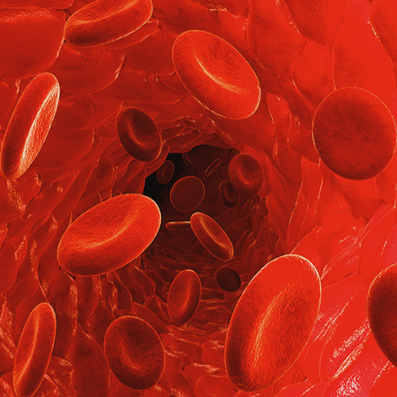
Why are lung cancer mortality risk tests needed? Because lung cancer symptoms may not develop until it is at a later stage, only about 16% of cases are diagnosed at an early stage.
This is important because the earlier lung cancer is detected, the better a person’s outlook will be.
“Lung cancer is the leading cause of cancer death worldwide,” said Dr. Edwin Ostrin, an assistant professor of general internal medicine at The University of Texas MD Anderson Cancer Center and co-corresponding author of this study.
“A major reason for this is that small lung cancers usually do not lead to symptoms and around two-thirds of lung cancers are thus diagnosed when they are large and have already started to spread,” Ostrin explained to Medical News Today.
“While we have made tremendous headway in treating both early and late-stage lung cancer, long-term survival is dramatically lower in more advanced lung cancer,” he added. “Any tools to provide early detection of lung cancer, and thus shift the stage at diagnosis to an earlier stage, would save lives.”
Why a blood test for lung cancer?
According to Ostrin, doctors have known since 2011 that for those at the highest risk for lung cancer — those with a significant smoking history — screening using an annual low-dose computerized tomography (CT) scan can reduce death from lung cancer by 20%.
“However, only those with the heaviest smoking history are eligible for CT-based screening,” he said. “Additionally, screening finds lots of indeterminate pulmonary nodulesTrusted Source, the vast majority of which are not cancer but still require follow-up.”
For this reason, Ostrin and his colleagues have been working on a four-protein biomarker panel (4MP) for lung cancer early detection for most of the past decade.
“The blood test is a simple measurement of four proteins measured using immunoassayTrusted Source,” he explained. “Lab tests measuring blood proteins, including tests like prostate specific antigenTrusted Source or even pregnancy tests are almost universally measured in a similar fashion. Immunoassays are reliable, accurate, and inexpensive, and can be rapidly deployed into a variety of healthcare settings.”
The journey to a new lung cancer test
Ostrin and his team first publishedTrusted Source their work in JAMA Oncology in 2018, where their findings showed the ability to identify those at risk for developing lung cancer when combined with smoking history.
“In 2021, we revealedTrusted Source that the same panel could help to identify which indeterminate findings found on chest CT could be cancers and which were more likely to be benign,” Ostrin noted.
Then in 2022, Ostrin and his team published a Journal of Clinical Oncology paperTrusted Source, where, using samples from the Prostate, Lung, Colorectal, and Ovarian (PLCO) studyTrusted Source, the 4MP improved upon a well-validated clinical lung cancer risk score (PLCOm2012) to identify those at highest risk for cancer.
“The combination of 4MP+PLCOm2012 performed better when it came to identifying those who may benefit from CT-based screening versus the current or previous criteria and thus could be a key tool to improving lung cancer screening, especially if combined with the ability of the 4MP to help sort out indeterminate findings after a CT,” Ostrin said.
Lung cancer blood test current research
In this study, Ostrin said his team has now reanalyzed data from the PLCO trial, instead looking at lung cancer death.
“Individuals enrolled in PLCO were meticulously followed for as long as 20 years after enrollment,” he explained. “This allowed us to evaluate how the 4MP performed not only in predicting the development of lung cancer but in predicting those who may develop lethal lung cancer. This emphasizes the potential usefulness of the 4MP in CT-based screening because those at (the) highest risk (of) dying from lung cancer would presumably benefit the most from earlier detection of cancer at an earlier stage when it is more curable.”
For this study, researchers analyzed pre-diagnostic blood samples from more than 2,700 participants in the PLCO cancer screening trial. Of those analyzed, 552 participants later developed lung cancer and slightly more than 2,100 did not.
Of the 552 participants diagnosed with lung cancer during the six-year study period, 70% died from the disease.
Using hazard ratios, scientists evaluated the relationship between the combined risk scores generated by the use of the 4MP blood test and lung cancer risk model against lung cancer death incidence.
Researchers found the combination risk scores showed improved sensitivity, specificity, and positive predictive value when compared to the 2013 and 2021 U.S. Preventive Services Task Force (USPSTF) criteriaTrusted Source for predicting lung cancer-specific mortality among individuals who smoked at least 10 pack-years.
Research next steps
As for the next steps for the 4MP blood test, Ostrin said they are actively working to develop it into a clinical-grade test and hope to have it ready within the next few months.
